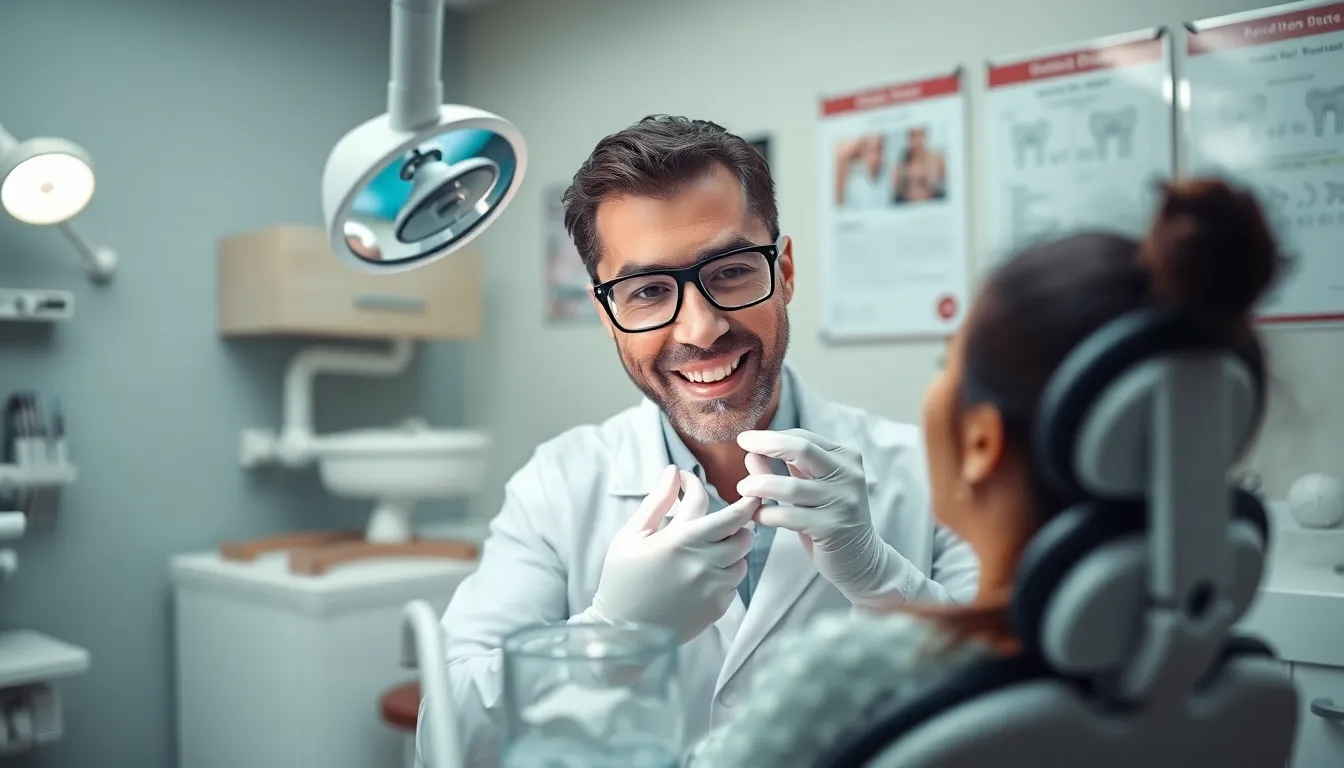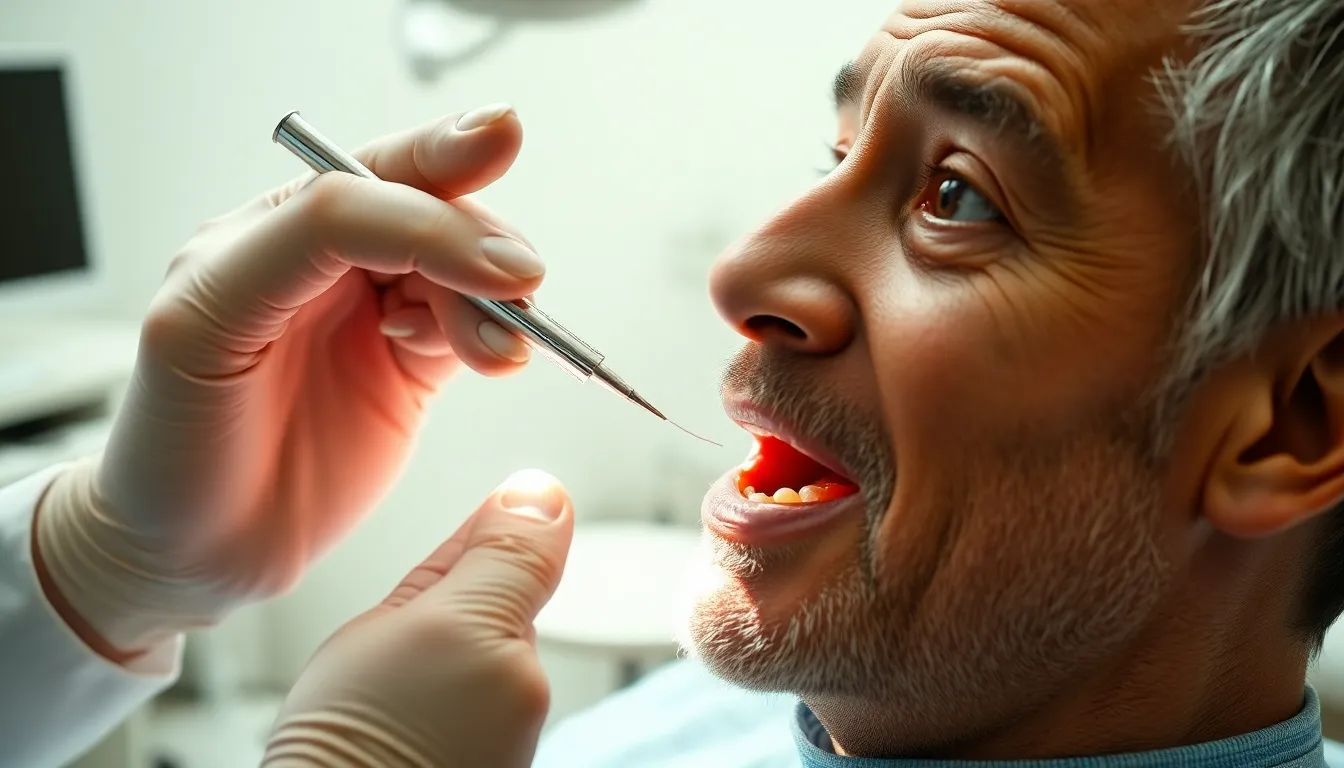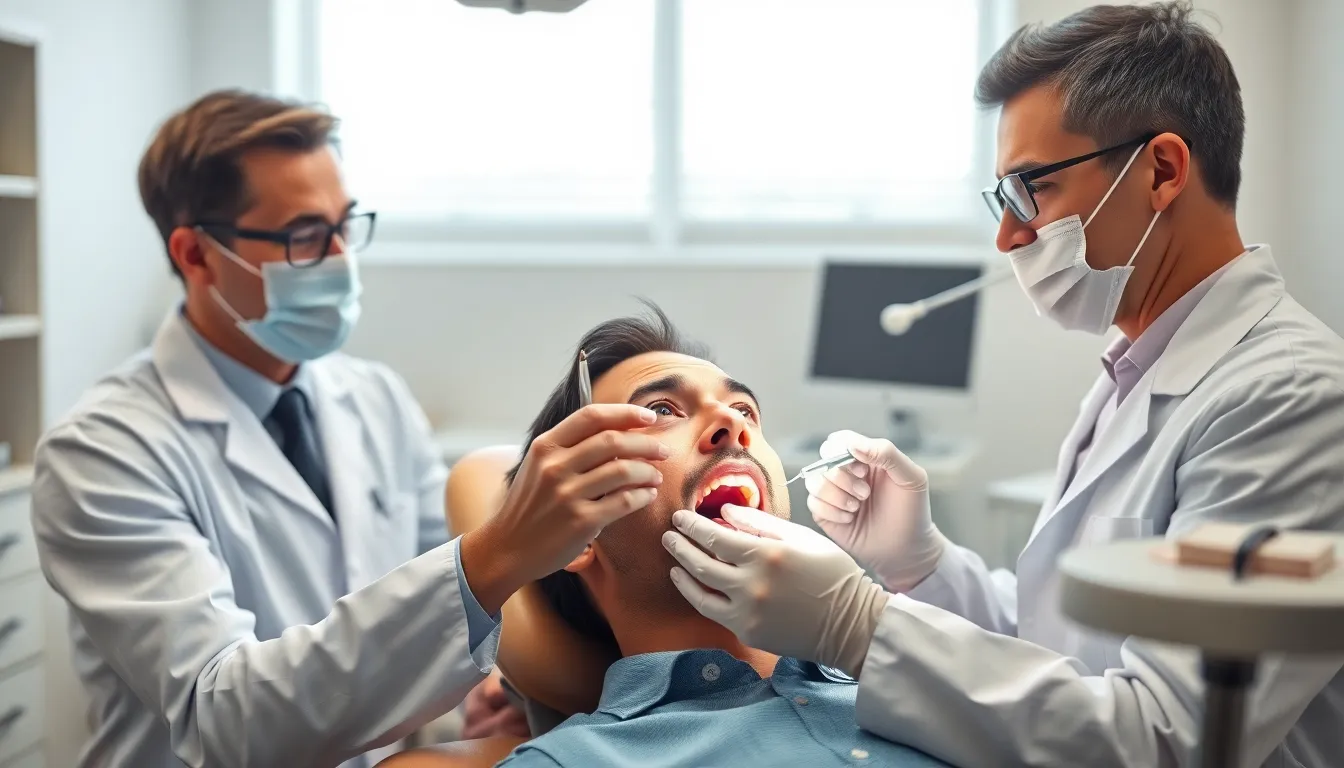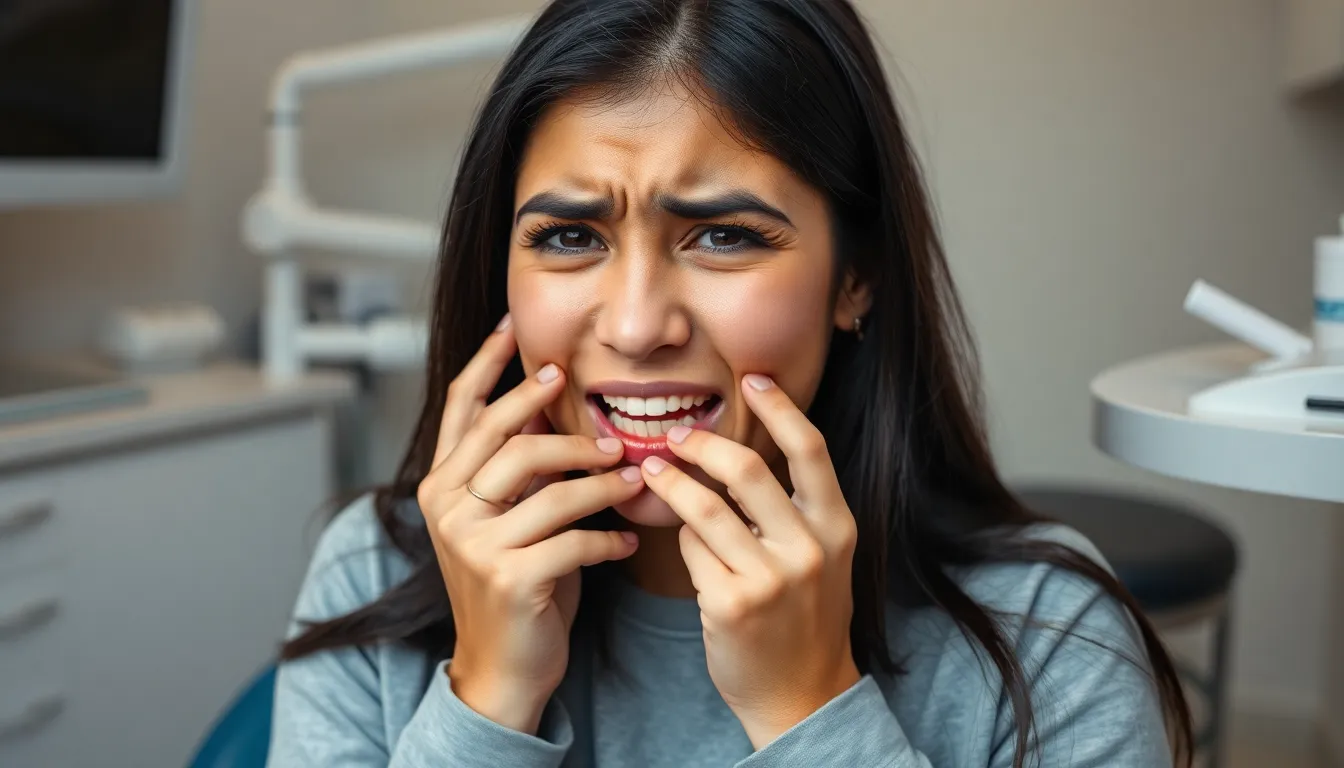Ever wondered if your favorite alcoholic beverages could be damaging your teeth? Alcohol cavities are a real concern for many who enjoy their nightly glass of wine or weekend cocktails. Your dental health might be at risk without you even realizing it.
The relationship between alcohol consumption and dental cavities isn’t always obvious. Many alcoholic drinks contain high amounts of sugar and acids that can erode tooth enamel and create the perfect environment for cavity-causing bacteria. Whether you’re sipping on sweet cocktails or enjoying seemingly innocent beverages like wine and beer, understanding how alcohol affects your oral health is crucial for maintaining that bright smile.
The Relationship Between Alcohol and Dental Cavities
Alcohol consumption affects your oral health in several ways that increase cavity risk. Regular drinking exposes teeth to acidic compounds that weaken enamel and create an environment where cavity-causing bacteria thrive. Studies show that individuals who consume alcohol 3-4 times weekly have a 35% higher rate of dental caries compared to occasional drinkers.
Recently, I treated Sarah, a 32-year-old patient who enjoyed weekend wine tastings. She couldn’t understand why she’d developed five new cavities even though brushing twice daily. After reviewing her habits, we identified her regular wine consumption as a important contributor to her dental problems. Wine’s acidity (pH 3.0-3.8) directly attacks tooth enamel, especially when sipped over several hours.
How Alcohol Damages Teeth
Alcoholic beverages damage your dental health through multiple mechanisms. Most alcoholic drinks contain fermentable carbohydrates that oral bacteria convert into acids, leading to demineralization of tooth enamel. Hard liquor, while lower in sugar content, typically has a pH between 3.0-4.0, well below the critical pH of 5.5 where enamel begins to dissolve.
The dehydrating effect of alcohol reduces saliva production by up to 70% during consumption periods. Saliva plays a crucial role in neutralizing acids and remineralizing enamel, making its reduction particularly problematic for dental health. Also, alcohol alters the oral microbiome, increasing harmful bacteria like Streptococcus mutans while decreasing protective bacterial species.
Types of Alcoholic Beverages and Their Impact
Different alcoholic drinks pose varying levels of risk to your dental health:
- Sweet cocktails contain up to 30g of sugar per serving and often include acidic mixers like citrus juices, creating a double threat to enamel integrity
- Wine contains tartaric, malic, and citric acids that directly erode dental surfaces, with red wine also containing tannins that stain teeth
- Beer has a pH of approximately 4.0-5.0 and contains fermentable carbohydrates that feed cavity-causing bacteria
- Hard seltzers often market themselves as healthier alternatives but still contain acids and usually 1-5g of sugar per serving
Clinical research from the Journal of Dental Research demonstrates that frequent consumption of mixed drinks with high sugar content increases cavity formation by 48% compared to straight spirits or non-alcoholic beverages.
Prevention Strategies for Alcohol Drinkers
Protecting your teeth while enjoying alcoholic beverages requires exact preventive measures:
- Rinse with water between alcoholic drinks to neutralize acids and wash away sugars
- Use a straw for sugary or acidic drinks to minimize contact with teeth surfaces
- Wait 30-60 minutes before brushing after consuming alcohol to avoid damaging softened enamel
- Apply fluoride treatments regularly if you’re a frequent drinker to strengthen enamel resistance
- Schedule dental cleanings every 4-6 months instead of the standard 6-month interval
How Alcohol Consumption Affects Oral Health

Alcohol consumption significantly damages your oral health through multiple mechanisms. Research shows that regular drinkers face a higher risk of developing cavities, gum disease, and even permanent tooth loss compared to non-drinkers.
Impact on Saliva Production
Alcohol dramatically reduces your saliva flow, eliminating a crucial natural defense against tooth decay. Your saliva normally washes away harmful bacteria and food particles while neutralizing acids that damage enamel. With decreased saliva production, bacteria accumulate more easily on your teeth, creating ideal conditions for cavity formation. This dry mouth effect is particularly noticeable in patients who drink frequently, as their protective salivary mechanism becomes compromised. Dr. Harris recently treated a 42-year-old patient who complained of increased tooth sensitivity and was diagnosed with multiple cavities even though good oral hygiene practices. After discussing his habits, the patient revealed he consumed 2-3 glasses of whiskey nightly, which contributed to chronic dry mouth and the resulting cavity development.
Sugar Content in Alcoholic Beverages
Alcoholic drinks contain hidden sugars that feed cavity-causing bacteria in your mouth. Alcohol metabolizes into sugar directly in your oral cavity, providing immediate nourishment for harmful bacteria that produce enamel-eroding acids. Many popular cocktails and alcopops compound this problem by including additional sugary mixers that coat your teeth with fermentable carbohydrates. A typical margarita contains 24g of sugar while a piña colada can pack up to 43g, creating a perfect storm for tooth decay. Beer, wine, and cider contribute to enamel erosion through their inherent acidity, with studies showing that people who abuse alcohol are three times more likely to experience permanent tooth loss than non-drinkers. Regular consumption of these beverages creates an acidic oral environment where protective enamel gradually weakens, leaving your teeth vulnerable to cavity formation.
Common Types of Alcohol That Cause Cavities

Certain alcoholic beverages pose a greater threat to your dental health than others, particularly when it comes to cavity formation. The combination of acidity, sugar content, and frequency of consumption determines how damaging these drinks can be to your teeth.
Wine and Tooth Enamel Erosion
Wine significantly impacts tooth enamel due to its high acidity levels that gradually wear down your protective enamel layer. Red wine contains potent tannins that not only contribute to enamel erosion but also cause noticeable staining on tooth surfaces. According to the Royal College of Surgeons (2019), regular wine consumption measurably decreases the mineral content in your enamel, making teeth more vulnerable to sensitivity and decay. White wine, though less visible in its effects, can be equally damaging due to its often higher acidity levels.
Dr. Harris recently treated a patient who enjoyed two glasses of red wine nightly for several years. “Even though her excellent oral hygiene routine, she developed multiple small cavities along the gumline where the wine had contact with her teeth for extended periods. The enamel in these areas had noticeably thinned, creating perfect environments for cavity-forming bacteria,” he explained.
Mixed Drinks and Hidden Sugars
Mixed drinks and cocktails often contain deceptively high sugar levels that dramatically increase your cavity risk. Popular options like margaritas, mojitos, and daiquiris combine alcohol with sugary mixers that create the perfect storm for tooth decay. These drinks provide food for cavity-causing bacteria, which produce enamel-eroding acids as they metabolize sugars. Studies from Stonecreek Dental (2024) show that a single piña colada can contain up to 43 grams of sugar—more than a can of soda.
The cavity risk from mixed drinks is compounded by alcohol’s dehydrating effect. Alcohol reduces your saliva production, creating dry mouth conditions where acids aren’t naturally neutralized. Your teeth remain exposed to these harmful substances for longer periods without saliva’s protective benefits. A patient who regularly consumed whiskey sours experienced this problem firsthand—the combination of lemon juice acidity, sugar, and reduced saliva flow led to six new cavities in just eight months, even though brushing twice daily.
The Science Behind Alcohol Cavities

Alcohol consumption directly impacts dental health through several complex biological mechanisms. Scientific research has identified exact ways that alcoholic beverages contribute to cavity formation and enamel deterioration.
pH Levels and Enamel Demineralization
The acidic nature of alcoholic beverages creates an environment that actively damages tooth enamel. Beer, wine, cider, and cocktails contain acids that lower your mouth’s pH level, initiating a process called demineralization where minerals are drawn out from your tooth enamel. This acidic environment dissolves the protective outer layer of your teeth, making them increasingly vulnerable to decay. Red and white wines are particularly problematic due to their high acid content, with pH levels often ranging between 3.0-3.8, well below the critical pH of 5.5 where enamel begins to erode.
Dr. Harris notes, “I’ve treated many patients who were meticulous about brushing but still developed cavities along the gumline. One patient, Amanda, a wine enthusiast who enjoyed a glass of red wine daily, was shocked when I discovered three cavities during her checkup even though her diligent oral care routine. The acids in the wine had gradually eroded her enamel, creating perfect conditions for cavity formation.”
Alcohol Metabolism and Sugar Production
Your body metabolizes alcohol into sugar directly in your oral cavity. This metabolic process creates an immediate food source for cavity-causing bacteria that naturally reside in your mouth. These bacteria feed on the sugars and produce acids as a byproduct, further contributing to enamel breakdown. Mixed drinks compound this problem significantly—cocktails containing fruit juices, sodas, or syrups coat your teeth with additional sugars, creating an ideal environment for bacterial proliferation and plaque formation.
Dehydration Effects on Oral Health
Alcohol acts as a diuretic, significantly reducing saliva production in your mouth. This reduction creates a condition known as xerostomia or dry mouth, which dramatically increases your cavity risk. Saliva plays several critical protective roles in your mouth—it naturally washes away food particles, neutralizes acids from food and drinks, and contains compounds that actively fight bacteria. With reduced saliva flow, bacterial colonies flourish unchecked, and your mouth loses its natural defense system against decay.
A recent patient of Dr. Harris experienced this firsthand: “Michael came to me with seven new cavities after increasing his alcohol consumption during a stressful period at work. His mouth was noticeably dry during examination, and he confirmed experiencing morning dry mouth after evening drinks. Without adequate saliva, his teeth had no protection against the bacterial acids.”
Studies reveal that individuals who consume alcohol regularly have 35% more cavities than occasional drinkers. The reduction in saliva flow can last for hours after drinking, leaving your teeth vulnerable long after you’ve finished your last drink. This dehydrating effect also impairs your mouth’s natural ability to repair minor enamel damage, allowing small weaknesses to develop into full cavities more quickly.
Heavy drinkers face particularly serious risks, being three times more likely to experience permanent tooth loss compared to non-drinkers. Research shows that chronic alcohol users typically have more decayed teeth than non-users, with the prevalence of decay being even higher among those who combine alcohol with other substances.
Prevention Strategies for Alcohol-Related Cavities

Protecting your teeth from alcohol-related damage requires exact preventive measures. Implementing these strategies can significantly reduce your risk of developing cavities while still enjoying alcoholic beverages in moderation.
Hydration and Oral Care Routines
Daily brushing and flossing form the foundation of effective prevention against alcohol-related cavities. Research shows these practices are crucial for removing plaque and preventing tartar build-up caused by bacteria that thrive after alcohol consumption. You’ll achieve better results by using a soft-bristled toothbrush at a 45-degree angle to your gumline, making short strokes across all tooth surfaces and your tongue to reduce bacteria. Rinsing your mouth with water immediately after consuming alcoholic drinks helps wash away sugars and acids that contribute to decay.
“I had a patient who enjoyed a glass of wine every evening but experienced increasing tooth sensitivity,” shares Dr. Todd B. Harris. “After incorporating a simple water rinse between sips and waiting 30 minutes before brushing afterward, her enamel stopped eroding and sensitivity decreased dramatically within weeks.”
Increasing your water intake while limiting alcohol consumption enhances saliva production naturally. Your saliva serves as a natural protector by washing away bacteria and neutralizing acids that attack tooth enamel. Alternating alcoholic beverages with water not only reduces overall alcohol consumption but also maintains proper hydration levels essential for optimal oral health.
Dental Products for Heavy Drinkers
Fluoride toothpaste provides essential protection against the acid erosion commonly associated with alcoholic beverages. Your enamel benefits from fluoride’s remineralizing properties, which strengthen teeth against the acidic assault from drinks like wine and beer. Antimicrobial mouth rinses offer additional protection, particularly for those who consume alcohol frequently or experience dry mouth symptoms.
Regular replacement of your toothbrush every 3-4 months ensures effective cleaning power. Studies indicate that heavy drinkers have higher plaque levels and face three times greater risk of permanent tooth loss compared to non-drinkers, making proper tools even more critical for this group.
Saliva substitutes and sugar-free chewing gums stimulate natural saliva production, helping combat the dry mouth effects of alcohol. Your mouth’s natural defense system relies heavily on adequate saliva flow, which becomes compromised with regular alcohol consumption. Products specifically designed to address xerostomia (dry mouth) can significantly reduce cavity risk in individuals who drink regularly.
Professional dental check-ups every six months allow for early detection and management of alcohol-related dental issues. Your dentist can identify early signs of enamel erosion and recommend personalized preventive strategies based on your exact drinking patterns and oral health status.
Long-Term Effects of Alcohol on Dental Health

Increased Risk of Cavities
Alcohol contributes to cavity development through multiple mechanisms. When metabolized in your mouth, alcohol breaks down into sugars that feed cavity-causing bacteria. These bacteria produce acids that gradually erode tooth enamel, creating the perfect environment for cavities to form. Many alcoholic beverages, particularly cocktails and flavored drinks, contain added sugars that compound this effect by coating your teeth with fermentable carbohydrates. Studies show that regular alcohol consumers have a 35% higher rate of dental caries compared to occasional drinkers.
Dr. Harris recently treated a patient who enjoyed red wine every evening for years. “Even though maintaining good brushing habits, she developed important enamel erosion along her gumlines. The combination of wine’s acidity and reduced nighttime saliva flow had created perfect conditions for multiple cavities to form,” he explained.
Dry Mouth and Reduced Saliva Protection
Alcohol significantly reduces saliva production, creating chronic dry mouth in regular drinkers. Your saliva plays a crucial role in oral health by washing away food particles, neutralizing acids, and remineralizing early enamel damage. With decreased saliva flow, bacteria adhere more strongly to tooth surfaces, increasing plaque buildup and cavity formation. The protective minerals in saliva can’t effectively repair microscopic enamel damage when your mouth remains dry. Regular alcohol consumption disrupts this natural defense system, leaving your teeth vulnerable to decay.
Periodontal Disease Progression
Heavy alcohol use strongly correlates with periodontal disease development and progression. Research published in the Journal of Periodontology confirms that regular alcohol users demonstrate significantly worse gum health than non-drinkers. Alcohol weakens your immune response, making it harder for your body to fight the bacteria that cause gum disease. Early signs include bleeding gums, plaque accumulation, and gum recession. As periodontitis advances, pockets form between your teeth and gums, creating spaces for infection to thrive. Left untreated, this condition leads to tooth loss and contributes to systemic health issues including diabetes, cardiovascular disease, and certain cancers.
Permanent Tooth Loss Risk
Long-term alcohol consumption dramatically increases your risk of permanent tooth loss. Heavy drinkers are three times more likely to lose teeth compared to non-drinkers. This elevated risk stems from the combined impact of increased plaque formation, weakened immune responses to oral infections, and advanced periodontal disease. The acidic nature of most alcoholic beverages further contributes to this problem by gradually dissolving tooth enamel, making teeth more susceptible to fractures and extensive decay that may require extraction.
One of Dr. Harris’s patients, a 45-year-old with a 20-year history of heavy drinking, required multiple extractions even though never experiencing dental pain. “The alcohol had masked the symptoms while simultaneously destroying the supporting structures around his teeth. By the time he sought treatment, several teeth were beyond saving,” Dr. Harris noted.
Conclusion
Your favorite drinks might be silently damaging your teeth. The connection between alcohol and cavities is clear – from sugar-laden cocktails to acidic wines and dehydrating effects that reduce protective saliva.
Knowing the risks doesn’t mean you need to avoid alcohol completely. Instead focus on balance and protection. Drink water between alcoholic beverages rinse your mouth afterward and maintain consistent dental hygiene practices.
Remember that prevention is always easier than treatment. Regular dental check-ups can catch early signs of damage before they become serious problems. By making informed choices about your alcohol consumption and dental care you can enjoy your drinks while keeping your smile healthy for years to come.
Frequently Asked Questions
Does alcohol directly cause cavities?
Yes, alcohol can directly contribute to cavities. Alcoholic beverages often contain sugars and acids that erode tooth enamel and create an environment where cavity-causing bacteria thrive. When alcohol metabolizes in your mouth, it breaks down into sugars that feed these harmful bacteria. Additionally, alcohol reduces saliva production, which normally helps protect teeth by washing away bacteria and neutralizing acids.
Which alcoholic drinks are worst for dental health?
Sweet cocktails, wine, and beer pose the greatest risks to dental health. Cocktails with sugary mixers provide food for bacteria that produce enamel-eroding acids. Wine, especially red wine, contains high acidity and tannins that damage enamel and cause staining. Beer contains fermentable carbohydrates and acids that contribute to enamel erosion. Hard seltzers, despite their “healthier” reputation, also contain acids that can harm teeth.
How does alcohol consumption affect saliva production?
Alcohol significantly reduces saliva production, causing chronic dry mouth (xerostomia). Saliva is crucial for oral health as it washes away food particles, neutralizes acids, and contains minerals that help remineralize enamel. Without adequate saliva, teeth become more vulnerable to decay and cavity formation. Studies show that even moderate alcohol consumption can reduce saliva flow by up to 40%, substantially increasing cavity risk.
Are heavy drinkers more likely to lose teeth?
Yes, heavy drinkers are approximately three times more likely to experience permanent tooth loss compared to non-drinkers. Regular alcohol consumption leads to a cascade of oral health problems, including increased cavity formation, compromised gum health, and reduced immune response to oral infections. The combination of enamel erosion, decreased saliva, and periodontal disease significantly increases the risk of tooth loss over time.
Can I prevent dental damage while still drinking alcohol?
Yes, you can reduce dental damage while consuming alcohol by: drinking water between alcoholic beverages to rinse away acids and sugars; using a straw when drinking acidic beverages to minimize contact with teeth; waiting at least 30 minutes after drinking before brushing (brushing immediately can damage softened enamel); maintaining excellent oral hygiene; and scheduling regular dental checkups. Consider alcohol-free days to give your mouth time to recover.
Does the type of alcohol affect cavity risk?
Absolutely. Different alcoholic beverages pose varying levels of risk based on their sugar content, acidity, and alcohol percentage. Sweet cocktails containing sugary mixers present the highest risk due to their sugar content. Wine, especially white wine, is highly acidic and erodes enamel. Beer contains both acids and fermentable carbohydrates. Clear spirits like vodka or gin consumed without mixers generally pose the lowest risk but still cause dehydration.
How quickly can alcohol damage teeth?
Dental damage from alcohol consumption occurs gradually over time rather than immediately. However, the erosive effects on enamel can begin within minutes of consumption, especially with acidic drinks like wine. Regular drinkers may notice increased sensitivity and discoloration within months. Studies indicate that individuals who drink 3-4 times weekly have a 35% higher rate of cavities compared to occasional drinkers, with noticeable damage often appearing within 1-2 years.
Does alcohol affect gum health as well as teeth?
Yes, alcohol significantly impacts gum health. Regular alcohol consumption weakens the immune system’s response to bacteria, allowing gum infections to develop more easily and progress more rapidly. Studies show that heavy drinkers have higher rates of periodontal disease, characterized by inflamed gums, receding gum tissue, and eventual tooth loosening. Alcohol’s dehydrating effects also reduce saliva flow, which normally helps protect gum tissue.







